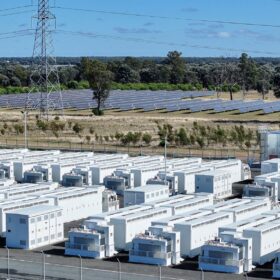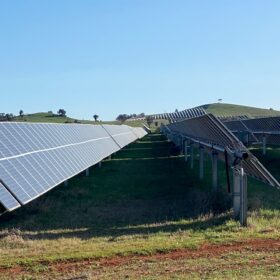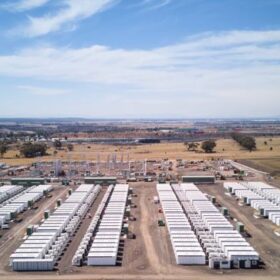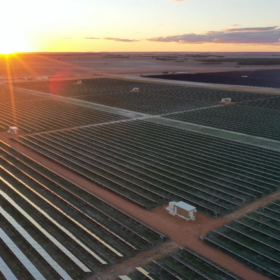From pv magazine USA
It may not be the largest battery energy storage system, but the 30 MW Top Gun system at San Diego Gas & Electric’s Miramar substation in California may have the coolest name. The array of lithium-ion batteries is set to enter service during the first quarter of 2021.
Naval Air Station Miramar is home to the TOPGUN aviator training center made famous in the 1986 movie starring Tom Cruise.
SDG&E said that because of delays with fabricating battery containers due to the Covid-19 pandemic, the project is a few months behind schedule. Even so, construction milestones include pouring foundations, completing overhead interconnection facilities and building and energizing the switchgear and control shelter.
Top Gun is one of 16 BESS projects in California that are slated to enter service in 2021. That’s according to data from the Federal Energy Regulatory Commission and Energy Department’s Energy Information Administration.
All totaled, the Golden State systems represent more than 825 MW of capacity. The smallest to make the FERC database is the 1.4 MW DESI-2 BESS that Southern California Edison is expected to bring into service this coming June. The largest is the 182.5 MW Elkhorn BESS that Pacific Gas and Electric plans to bring online in July.
Under California Assembly Bill 2514, investor-owned utilities have been tasked with incorporating more energy storage into the energy grid to integrate greater amounts of renewable energy, defer the need for new fossil-fueled power plants, and reduce utility BESSdependence on fossil fuel generation to meet peak loads.
Earlier this month, Pacific Gas and Electric Co. asked California’s state utility regulators to approve six additional battery energy storage projects totaling 387 MW of capacity.
The utility said that the six project agreements complete procurement requirements outlined in a November 2019 decision by the Public Utility Commission. That decision identified potential electric system reliability issues beginning this coming summer. Regulators authorized PG&E to procure at least 716.9 MW of system reliability resources to come online between Aug. 1, 2021 and Aug. 1, 2023. In May, PG&E announced the results of its first round of procurement: 423 MW of battery energy storage capacity, scheduled to be online by August 2021.
Still more projects
Outside of California, some 555 MW of BESS capacity is expected to enter service nationwide during 2021, according to FERC data. Massachusetts will play host to no fewer than 18 of those projects, representing almost 64 MW of storage capacity.
Among the Bay State projects is a 1 MW BESS at Boston Medical Center slated to enter service during the first half of the year, and a roughly 25 MW BESS being developed by Eversource on Cape Cod.
The Eversource project will use a lithium-ion, 24.9 MW/38 MWh battery system. It will supply power in the event of an emergency like an outage, and will also help meet peak summer demand. The Outer Cape Community Battery is expected to enter service during the first quarter and aligns with Massachusetts’ Global Warming Solutions Act that established a greenhouse gas reduction goal of 80% by 2050.
In Texas, work is under way on the 100 MW Chisholm Grid BESS in Fort Worth. The project is being developed by Able Grid Energy Solutions, MAP Energy and Astral Electricity. Mortenson is the balance of plant and battery installation contractor. The project is Mortenson’s ninth energy storage project and is slated to enter service this summer.
Read about solar PV projects that FERC data shows are slated to enter service in 2021 by clicking here.
This content is protected by copyright and may not be reused. If you want to cooperate with us and would like to reuse some of our content, please contact: editors@pv-magazine.com.









TOPGUN moved to NAS Fallon Nevada and NAS Miramar changed to MCAS Miramar (USMC) in the mid-1990’s.